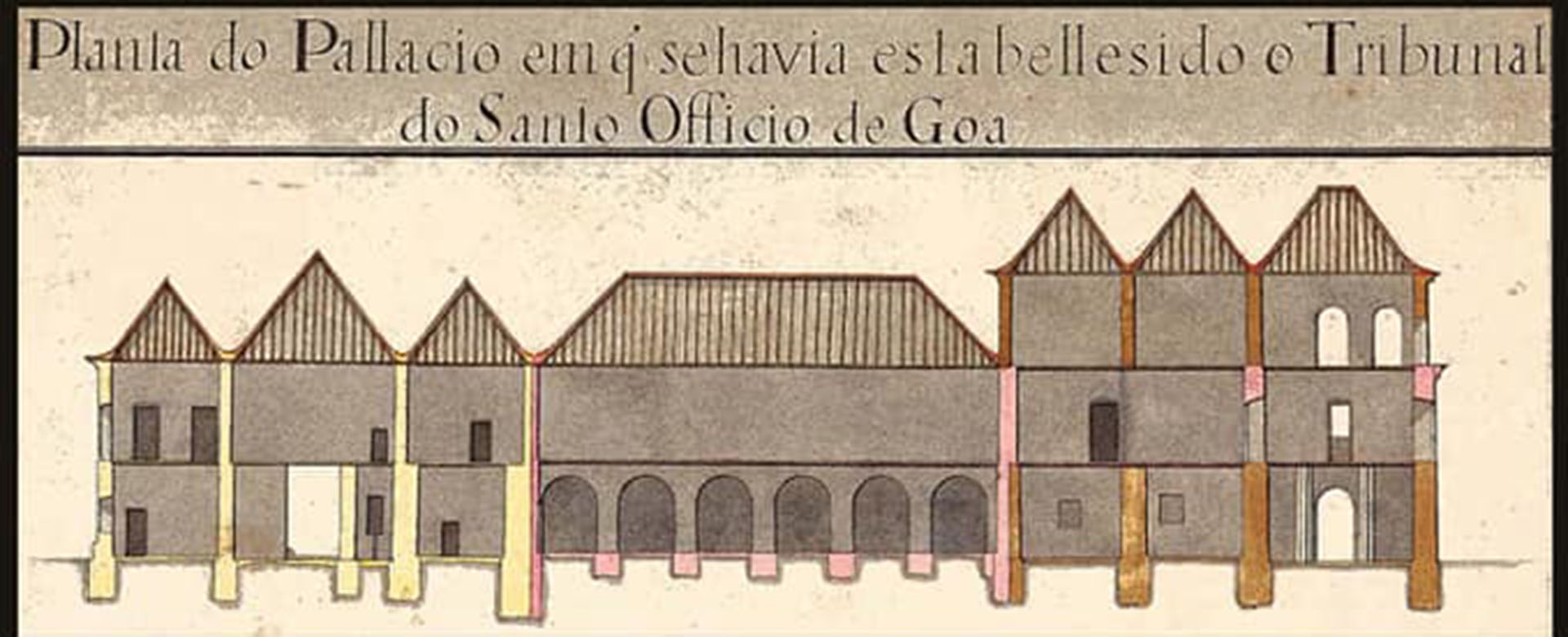A Distinguished Goan Scholar
After one has met a grand old man born just two decades after the Sepoy’s Mutiny, history cannot but look like a thing of the present. He migrated to Lisbon in the year of the Great Depression. He spent his post-retirement years in Goa and died several months after Portugal formally recognised the Indian takeover of his native land. He was a near-centenarian, but that is the least of his claims. He made history in more ways than one.

Dr. Mariano Saldanha (1878-1975) of Ucassaim was a physician-turned-indologist who studied history, language, literature, and culture. He was the nephew of Fr Gabriel de Saldanha, the author of the classic História de Goa. In 1905, he graduated in medicine and pharmacy from Goa’s iconic medical school. After a few years of professional practice, he left for Portugal to study Sanskrit under Mgr. Dalgado at the University of Lisbon. It was not unusual then for a man of science to show an interest in the humanities, but his was a total switch.

On his return in 1915, he taught Marathi and Sanskrit at the Panjim Lyceum and translated Kalidasa’s Meghaduta into Portuguese. In 1929, he was back in Lisbon, now a professor of Sanskrit at his alma mater. He proudly carried a message of friendship to the Portuguese people from Tagore, whom he visited in Shantiniketan. In 1946, he was appointed as the deputy director of Escola Superior Colonial’s Institute of African and Oriental Languages. He taught Konkani there until his superannuation in 1948.
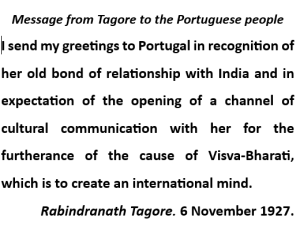 Ten years later, he returned to his family home. He enjoyed good health until the very end. His caretaker’s son Manuel Leitão remembers him as a dutiful Catholic with a caring heart. He was a regular reader of Portuguese, Konkani, and Marathi newspapers. Keen to establish high standards, he would red-mark the Konkani papers for the writers’ benefit. It is no wonder that his house became a centre of attraction for Goan journalists and researchers.
Ten years later, he returned to his family home. He enjoyed good health until the very end. His caretaker’s son Manuel Leitão remembers him as a dutiful Catholic with a caring heart. He was a regular reader of Portuguese, Konkani, and Marathi newspapers. Keen to establish high standards, he would red-mark the Konkani papers for the writers’ benefit. It is no wonder that his house became a centre of attraction for Goan journalists and researchers.
On the milestone anniversary of this distinguished scholar, we recall his precious contribution. Mariano Saldanha’s affinity to history and languages was evident from an early age. He pursued fundamental research in the Konkani language in Lisbon. He spent countless hours in libraries, archives, and museums, sifting through books and manuscripts with a scrupulous eye for the smallest clue.
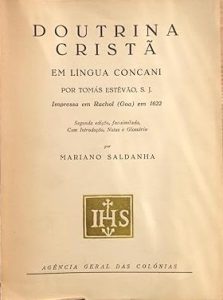
In 1945, Professor Saldanha produced an annotated facsimile edition of Thomas Stephens’ Doutrina cristã em língua concani (Christian doctrine in Konkani, 1622). In 1950, he unearthed sixteenth-century Konkani and Marathi manuscripts in Braga’s public library. The love of truth drove him forward not only to discover but also to share the fruits of his discovery. He did so even with his ideological dissenters, such as A. K. Priolkar.
In 1952, Saldanha was in Bombay as the president of the Fifth Konkani Parishad. Being a strong votary of Konkani in the Roman script, his address was published accordingly. Curiously, this is his only text written in Konkani. When he sensed the political winds of change, he began to emphasise Goa’s distinctiveness in the Indian subcontinent, through its language, Konkani; the Lusitanian influences on its culture; the roots of Western music; its pioneering printing endeavours, and its Christian Puranic literature.
After his death, his family gifted his large book collection to the Xavier Centre of Historical Research. His microfilms and manuscripts show his discipline and patience. He was a member of several academic bodies and published his writings in journals and newspapers. They depict him as a thorough academic researcher, an exacting reviewer, and a formidable polemicist.
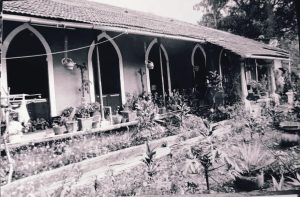
However, nothing prevented the good old bachelor from being patient with the youngsters. Maria Helena Saldanha de Santana Godinho told me of how she used to lap up information and pearls of wisdom from her granduncle. While, thanks to his prodigious memory, he recounted stories with ease, she happily fit those anecdotes about Akbar, Shivaji, and other Indian greats, in her school answers.
At age 6, this writer had an unforgettable first encounter with the then-nonagenarian professor. He had unveiled the bust of world-renowned oncologist Dr. Ernest Borges, his grandnephew, at Asilo Hospital, Mapuçá, and addressed the gathering. It was an emotional moment. After the ceremony, the Professor was asked if he would mind a slight delay in his ride home. His stern reply was, ‘Yes, I mind.’ But then, the delayed laughter said it all.
For their part, the citizenry today should mind that the memory of Goan notables is often taken for a ride. They deserve better from our civic, academic, and governmental bodies if we are to achieve a seamless transition from the past into the present.
Banner: Dr Mariano Saldanha delivering the presidential address at the Fifth Konkani Parishad, Bombay, 1952
This article was first published in Herald, Panjim, on Dr Mariano Saldanha's 50th anniversary of death, 23 Oct 2025
Why the Inquisition in Goa
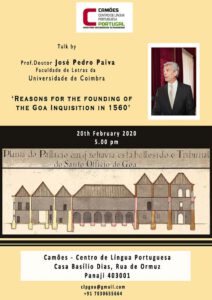
At Instituto Camões, Panjim, Professor José Pedro Paiva of the University of Coimbra provided a lucid rationale for the establishment of the Tribunal of the Inquisition in Goa (1560-1812). His talk was titled "Reasons for the Founding of the Goa Inquisition in 1560". He stated, among other things, that even prior to the arrival of St Francis Xavier the Religious had endeavoured to establish the Tribunal in Goa.
For my part, convinced that no serious student of history should depend exclusively on Charles Gabriel Dellon's much-quoted account titled Relation de l'Inquisition de Goa (1687) and Bombay-based A. K. Priolkar's expedient interpretations of the Frenchman's allegations, I asked the erudite Professor where one would find fresh archival sources to counter their claims. He pointed to the Portuguese and Brazilian archives.
Without a doubt, the Tribunal, like every human enterprise, had its shortcomings; but having said that, by no means do Dellon and Priolkar deserve a clean chit. While the testimony of the former, who was tried and incarcerated by the Tribunal, is largely suspect, the latter's narrative fails to contextualize the institution, and his vitriolic language hardly behoves a researcher. It is curious to note that his work appeared in the year 1961, a watershed in the history of Goa and Portugal.
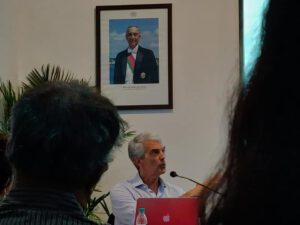
It is a pity that there has hardly been any comprehensive study of the Goa Inquisition, particularly in the English language. And alas, just as a big lie told frequently enough is finally believed, unsuspecting readers have found themselves trapped in a web of lies regarding the nature and purpose of the Inquisition. It is heartening that a younger crop of researchers has been shedding fresh light on the subject and overturning previous findings or misplaced conclusions.
Meanwhile, as the matter in question often boils down to the number of deaths at the stake, I was keen to know details of the same. The exact figure will never be known, since the relevant papers are unavailable, for reasons too complex to mention here. However, Professor Paiva authoritatively stated that, based on the lists of names available in Lisbon, the number of trials held in Goa, over a period of 250 years (1560-1812), are reckoned at 14,000 and the convictions at 800, the average thus being 3.2 deaths per annum.

Comparisons may be odious, but can we overlook the odious crime of human sacrifice perpetrated in Indian society outside the borders of Goa during that same historical period? Some of them had religious sanction, others were committed arbitrarily, but none gave any scope for self-defence or mercy. Similarly, who can deny that the number of convictions by criminal courts far exceeded the inquisition tribunal's annual average of convictions?
Finally, those numbers pale by comparison to the political and other inquisitions at work in the twenty-first century, many of which - please note - do not have even the semblance of a tribunal or a fair trial. Hence, a sense of history and fair play are a must to understand the rationale behind the Inquisition tribunal set up in Goa way back in the sixteenth century.

